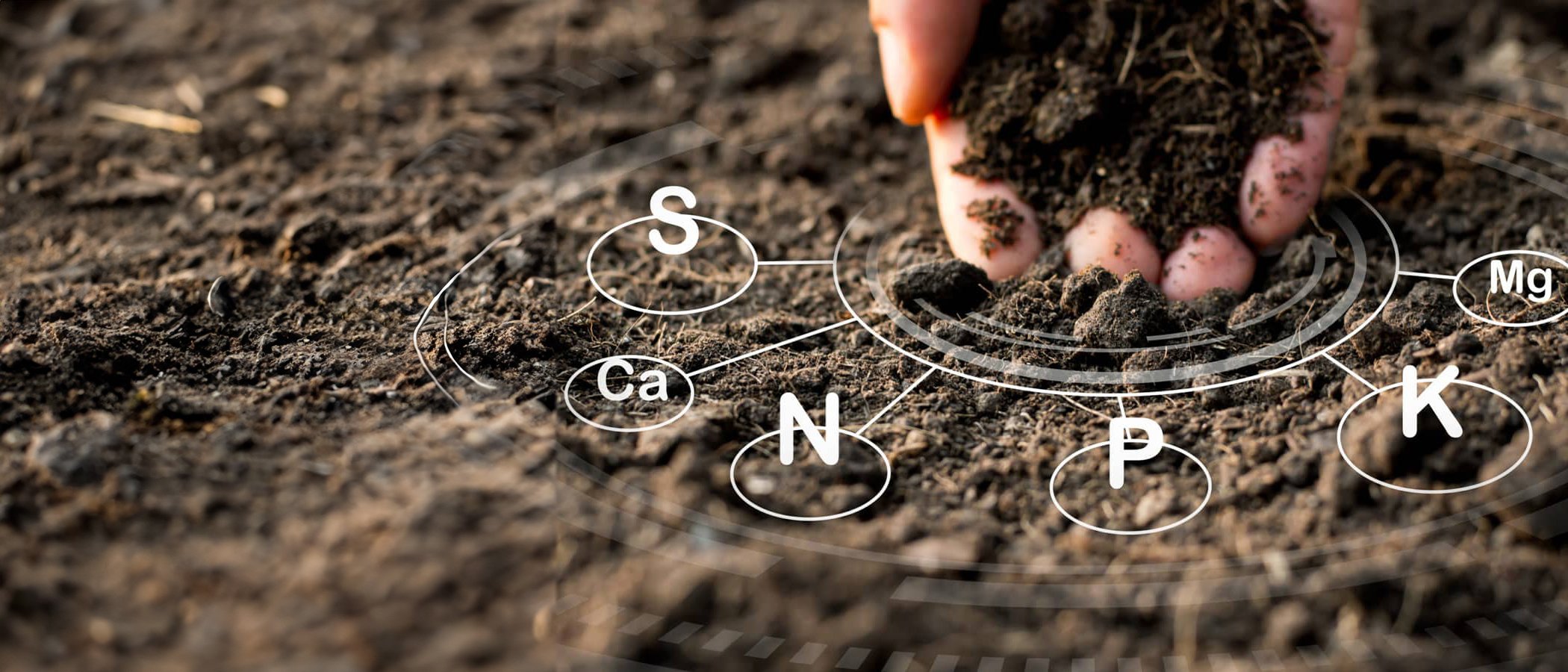
IT ALL STARTS WITH A SOIL TEST
Soil Tests Deliver Science-backed Results
-

Measuring needs vs results.
A foundational part of the Urth Agriculture’s approach involves our systematic soil testing and analysis performed BEFORE and THROUGHOUT the growing season. Our process provides critical insight on field-specific soil and growing conditions, plant and crop quality metrics and more. Along with our custom trial program, this testing has delivered valuable data on Urth products and their efficacy with more than 30 different crops.
-

Baseline and prep analysis.
We start with soil samples to obtain baseline values for soil nutrients and chemical characteristics. Samples are analyzed by acid extraction (Mehlich 3) as well as deionized water extraction (Saturated Paste). The Mehlich 3 results provide a general understanding of exchangeable nutrients (what’s present in the soil), while the Saturated Paste report defines soluble (what’s bio-available) nutrient levels.
Factors of focus include soil organic matter, pH, total exchange capacity, exchangeable vs. soluble macro and micronutrients as well as soil media density and carbon to nitrogen ratio.
Additional measurements include NPK and Carbon, measuring nitrogen in nitrate and ammonum form. In addition, phosphorus is measured in P2O5 form. Carbon is measured as soil organic matter (SOM) and as a ratio relative to nitrogen (C/N).
-

Key soil and plant health parameters.
Some of the most helpful data is collected through soil compaction tests with the use of a penetrometer, as well as electrical conductivity (EC) measurements with an EC meter.
For plant and crop quality we measure °BRIX using a refractometer, which provides an excellent indication of plant health and nutrient density.
Analysis of this information, along with grower feedback, goals and other input considerations, is what directs our recommended product protocols.
Monitoring progress & results.
Over the course of the growing cycle, we continue to work with growers to monitor and record field conditions, crop development and harvest data.
Resulting increases in yield quantity and quality (including °Brix readings), along with decreases in overall input costs are what make us a compelling economic partner for our customers.
See below for examples of soil analysis reports taken on US customer farms, as well as a test to determine levels of minerals and soil structure.
Critical Measuring Devices
-

Compaction Tester / Soil Penetrometer
The best test for soil compaction and structure is performed by measuring soil aerobic zone. Push the soil penetrometer into a soil until it reaches 300 psi. Mark the spot where the probe meets the top of the soil, then measure to the tip. This is the current depth plants can send their feeder roots.
Aerobic zone should be as deep as possible. The deeper the zone, the larger the area plant roots have to draw minerals from. Today most aerobic zones are 2-3 inches deep. Years ago it was not uncommon to see aerobic zones between 5 and 7 inches deep.
-

EC Meter
Conductivity is expressed as the amount of energy within soil. The energy needed for growth and development increases as the plant grows. ERGS of 200-400 are all that is needed at germination with needs increasing to 800 ERGS during seed filling.
Soils with a conductivity over 1000 are generally compacted and too “hot.”
Learn more about Electrical Conductivity (EC).
-

Key soil and plant health parameters.
Brix is a measurement of the sugar level in plant extracts as created through photosynthesis and can be measured with a refractometer. There is a direct correlation between Brix levels and plant health.
Brix readings should be taken on a sunny day between the hours of 11:00 am and 4:00 pm. Sugar content in the plant should be at its highest during this time.
You can test the relative health and nutritional value of any fruits and vegetables you grow or purchase by checking their Brix.
Learn more about maximizing Brix.

